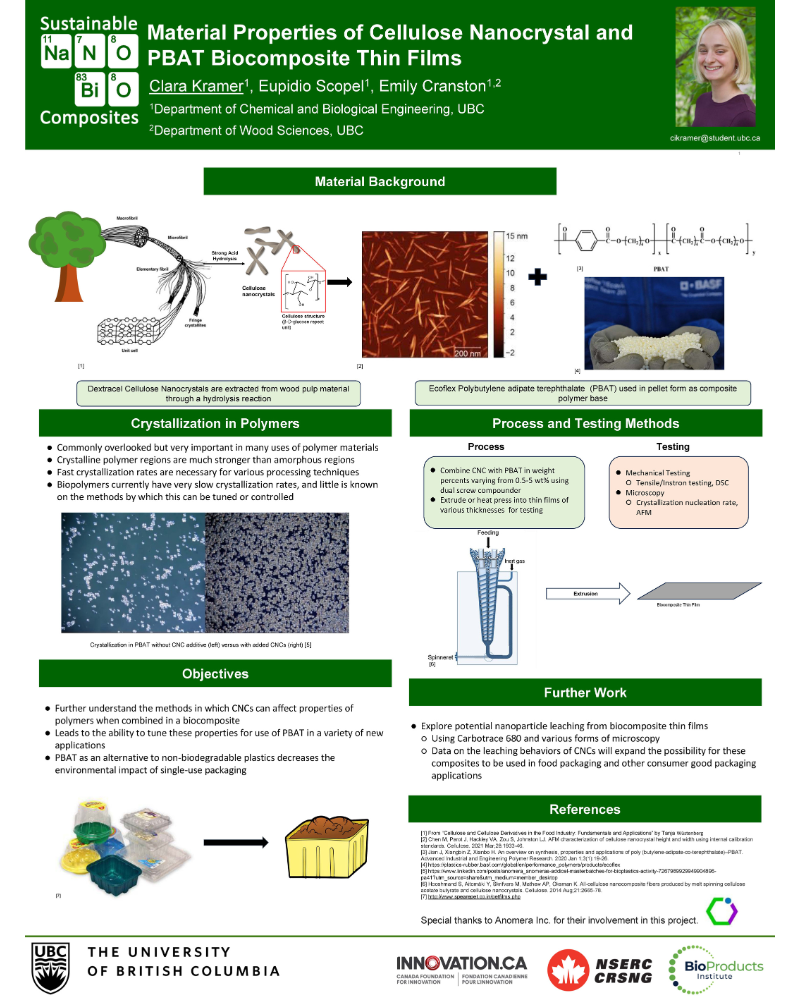
Bio-based plastics are currently gaining popularity as the detrimental effects of single- use plastic is becoming more apparent in our everyday lives. One of the most common biodegradable plastics industrially produced today is Polybutylene adipate terephthalate (PBAT). This polymer is a synthetically derived biopolymer, making it easier to produce in larger quantities than many of the other bio-based plastic competitors. The properties of biopolymers can be much different from petroleum-based plastics, posing difficulty in replacing the original plastics with the biodegradable alternative.
Cellulose nanocrystals (CNCs) are a highly crystalline nano-scale region of cellulose, which can be extracted to obtain the crystals themselves. These nanoparticles are becoming more common as an additive in various polymer bases due to their ability to change the properties of their carrier material. In this research, we are looking at the effects on PBAT with the addition of varying weight percents of CNCs. Dextracel never-dried CNCs are being used along with Ecoflex PBAT granules and are then combined and extruded to yield biocomposite thin-films. One of the main properties that is being focused on in this work is the nucleation and crystallization rate of the biocomposite under varying concentrations of CNC nanoparticles.
The goal of this research is to better understand the methods in which CNCs affect the properties of PBAT under different concentrations. This leads to biocomposite materials with properties that can be tuned to their specific application for use as a more environmentally friendly alternative to single-use plastics.